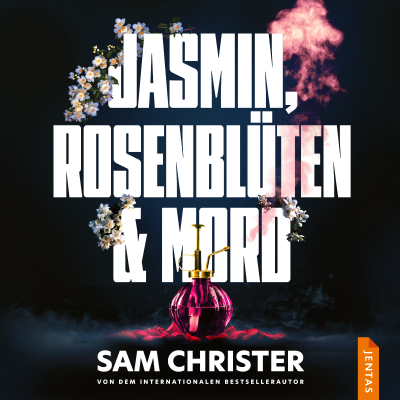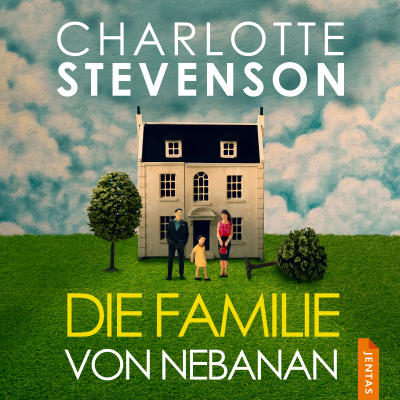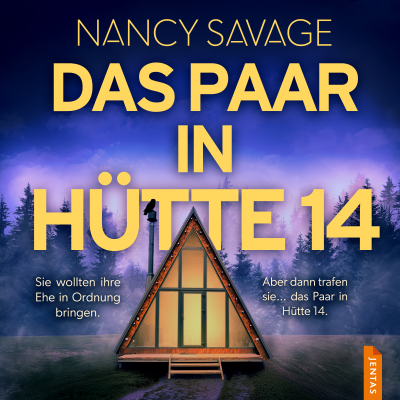
Tudor History with Claire Ridgway
Englisch
Gratis en Podimo
Kostenlos hören bei Podimo
Starte jetzt und verbinde dich mit deinen Lieblingspodcaster*innen
- Vertraut von über 1 Mio. deutschen Hörer*innen
- Über 1.000 lokale Podcasts und Shows – nur bei Podimo
- Keine Zahlung nötig
Mehr Tudor History with Claire Ridgway
Step back into a world of intrigue, passion, and ruthless ambition — welcome to Tudor England. Join historian and bestselling author Claire Ridgway as she uncovers the riveting stories of the Tudor dynasty. From the scandalous love affairs of King Henry VIII to the tragic fall of Anne Boleyn, the fierce reign of Elizabeth I, and the lesser-known secrets of Tudor court life, this podcast brings history to life in vivid detail. Hear dramatic tales of betrayal, execution, forbidden love, and political manoeuvring that shaped England forever. Discover daily Tudor history with fascinating “On This Day” episodes — unique insights you won’t find in typical history books. Get behind-the-scenes stories from Claire’s own research trips to historic sites like the Tower of London, Hampton Court Palace, Hever Castle, and more. Enjoy interviews with top historians and experts in Tudor studies, plus lively Q&A sessions tackling listeners’ burning Tudor questions. 🖋 Who is Claire Ridgway? Claire is the author of the bestselling On This Day in Tudor History series and numerous other Tudor books loved by readers around the world. She founded The Tudor Society, connecting enthusiasts with experts through live online events, and runs the hugely popular history websites The Anne Boleyn Files and www.ClaireRidgway.com. Her mission: to uncover the human stories behind the crown — the hopes, fears, and triumphs of not only kings and queens but also the courtiers, rebels, and ordinary people who lived under the Tudor rose. What can you expect? - Gripping accounts of famous events like the Field of Cloth of Gold, the Dissolution of the Monasteries, or the Babington Plot. - Intimate portraits of Tudor figures: Anne Boleyn’s charm and downfall, Thomas Cromwell’s rise and brutal fall, Elizabeth I’s cunning survival. - Dark mysteries and unsolved deaths — who really killed Amy Robsart? Was Katherine Howard truly guilty? - Special episodes on Tudor fashion, food, medicine, and the day-to-day lives of Tudor men and women. Join thousands of Tudor fans worldwide Never miss an episode — subscribe now and become part of a global community that can’t get enough of Tudor drama. Explore more with Claire’s books, free resources, and live historical events at www.ClaireRidgway.com. Ready to travel back 500 years? Press play and let the adventure begin.
Alle Folgen
1134 FolgenWhen the Thames Froze Solid
What did winter really feel like in Tudor England? Spoiler: nothing like the winter we know today. Hello, I’m historian and author Claire Ridgway, and in today’s Tudor Christmas Advent episode we’re stepping into a world of bone-deep cold, frozen rivers, and incredible resilience, the world of Tudor winter during the Little Ice Age. Between the 14th and 19th centuries, Europe and North America endured some of the coldest winters in recorded history. And the Tudors? They lived right in the middle of it. In this episode, discover: * What Tudor winters were really like — without heating, forecasts, or modern comforts * The astonishing times the River Thames froze solid * How Henry VIII and Elizabeth I reacted to the deep freeze * The extraordinary celebrations that took place on the ice * Why London’s legendary frost fairs eventually disappeared At the end, I’d love to hear from you: What’s the coldest winter you remember, and how did you cope? If you enjoy these festive Tudor deep dives, please like, subscribe, and click the bell so you don’t miss the next episode in the Advent series. Keep warm! #TudorHistory #LittleIceAge #FrostFairs #TudorChristmas #HistoryChannel #ClaireRidgway #TheAnneBoleynFiles #HistoryDocumentary #OnThisDayHistory #WinterHistory #BritishHistory
The Moment That Changed Anne Boleyn’s Life
Step into the winter stillness of Hever Castle with me, the beloved home of the Boleyn family, and a place that witnessed far more than festive cheer. In today’s Tudor Christmas Advent episode, I’m sharing Hever as you may never have seen it: dressed in its glowing Christmas finery and wrapped in the quiet magic of midwinter. But Hever is more than beautiful… it is the backdrop to a moment Dr Owen Emmerson and I believe changed the course of Tudor history. During the Christmas season of 1526 into early 1527, something happened here, something that shifted Henry VIII and Anne Boleyn’s future, and with it, the future of England. Anne was away from court, surrounded by family, and finally had the space to reflect on Henry’s increasingly urgent pursuit. What unfolded at Hever that Christmas would set the stage for everything that came next. In this episode, I’ll take you through Hever’s festive rooms and frosted gardens, sharing photographs taken this December by Dr Owen Emmerson and some of my own from Christmases past… while we explore how one winter retreat became a turning point in Tudor history. If you visit Hever at Christmastime, I invite you to imagine Anne here in 1526, facing a decision that would shape not only her destiny, but the destiny of a kingdom. Let’s step into Hever Castle at Christmas… And if you’d like to know even more about Anne’s family and their beloved home, do take a look at "The Boleyns of Hever Castle". #HeverCastle #AnneBoleyn #TudorChristmas #TudorHistory #HenryVIII #BoleynFamily #HeverAtChristmas #ChristmasHistory #HistoryYouTube #TudorTok #TheAnneBoleynFiles #BritishHistory #CastleHistory #LearnHistory #ChristmasAdventSeries
Tudor Carols & Christmas Music
Today we’re stepping into one of the most joyful parts of a Tudor Christmas - the music. Whether your festive soundtrack is Michael Bublé or Bing Crosby, Tudor England had its own musical traditions… and many of their carols are far older than you might expect. In this episode, we explore: - How music shaped Tudor Christmas celebrations - Which carols the Tudors actually knew - Why carols were originally dances - songs performed in circles, homes, streets, and seasonal revelshe role of the waits - Music in Tudor homes - Carols in wassailing traditions Thank you for joining me for this musical journey through Tudor Yuletide. If you enjoyed it, please like, subscribe, and click the bell, and tell me in the comments: Do you have a favourite Christmas carol? Or a Christmas soundtrack? See you tomorrow for more Tudor Christmas delights! #TudorChristmas #TudorHistory #ChristmasCarols #MedievalMusic #RenaissanceMusic #ClaireRidgway #TheAnneBoleynFiles #HistoryYouTube #YuletideHistory #HistoricalMusic #Waits #CoventryCarol #Gaudete #EarlyMusic
Bells, Staves & Misrule
Today we’re stepping into one of the most colourful, energetic, and wonderfully noisy traditions of the Tudor festive season, Morris dancing. You might picture modern dancers with bells and handkerchiefs on a village green… but in Tudor England, Morris dancing was bolder, brighter, and far more theatrical. In this video, we’ll explore: - What Morris dancing really looked like in the 15th and 16th centuries - bells, ribbons, masks, mock combat, clashing staves, blackened faces, and vibrant costumes How it became part of court entertainment - including Henry VII’s Christmas revels and Henry VIII’s masques - Its deep roots in English folk culture - from May Day to Whitsun ales, parish festivals to civic pageantry - The unforgettable stock characters - Maid Marian (played by a man!), jesters, hobby-horses, Robin Hood, even dragons! - Why it mattered at Christmas and Twelfth Night - joy, misrule, community, and celebration at the darkest time of year - And how Morris dancing survives today - a living tradition linking us directly to the Tudor world If you’ve ever seen Morris dancing and wondered where it came from, or if you simply love the colour, spectacle, and spirit of Tudor celebrations, this episode is for you. Thank you so much for watching! If you’re enjoying this festive journey through Tudor Christmas, please like, subscribe, and click the bell - there’s more Yuletide history coming your way tomorrow. #TudorChristmas #MorrisDancing #TudorHistory #ClaireRidgway #ChristmasTraditions #HistoryYouTube #TwelfthNight #TudorCourt #EnglishFolkDance #YuletideHistory #TheAnneBoleynFiles #HistoryChannel #BritishHistory
Tudor Yuletide Customs
Yule Logs, Twelfth Night Cakes & the Lord of Misrule. Step into a Tudor Christmas with me! I’m historian Claire Ridgway, and today’s Advent episode looks at the real Yuletide customs of Tudor England, from the dramatic arrival of the Yule log to the playful misrule of Twelfth Night. Why did Tudor households bring home an enormous log on Christmas Eve? What role did a humble bean play in choosing the “king” of the festivities? And how did these rituals blend ancient midwinter beliefs with Christmas celebrations? Discover the symbolism, the revelry, and the wonderful strangeness of a Tudor Yuletide, a world of firelight, games, and meaning woven into every tradition. Join me for a journey into the customs that made Christmas magical for the Tudors. If you’re enjoying this Advent series, please like, subscribe, and ring the bell — more Tudor Christmas delights are on the way! #TudorChristmas #YuleLogTraditions #TwelfthNight #TudorHistory #LordOfMisrule















































